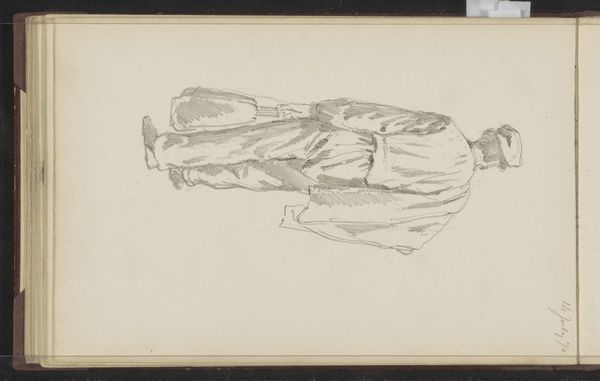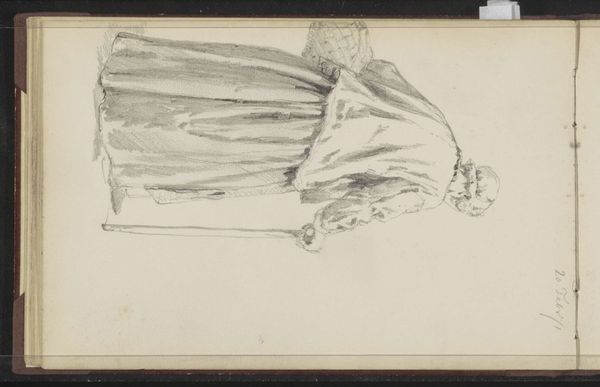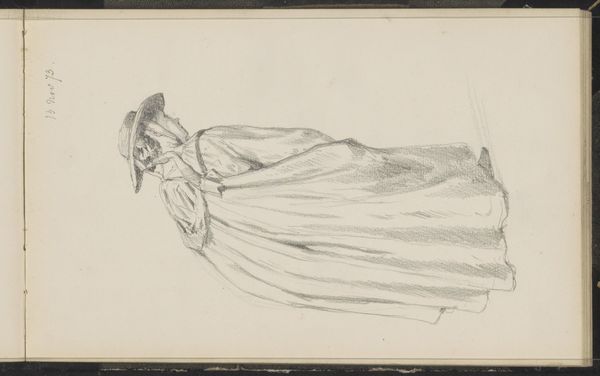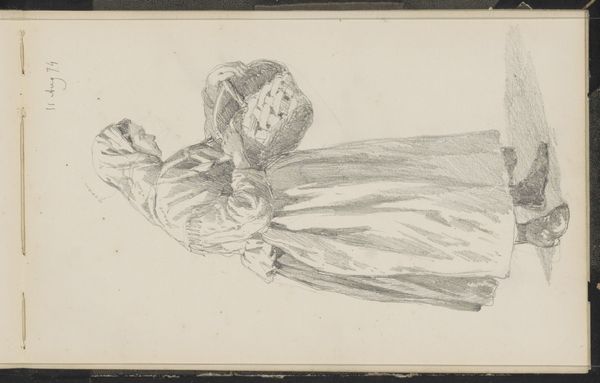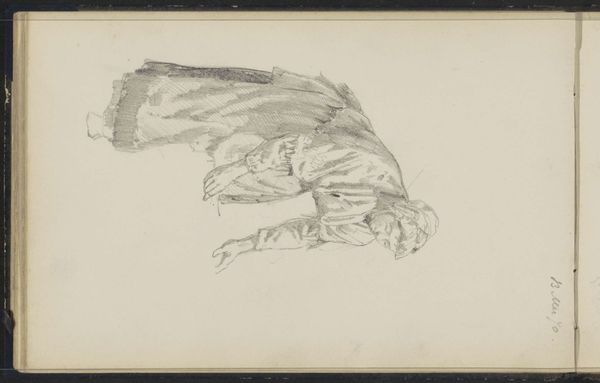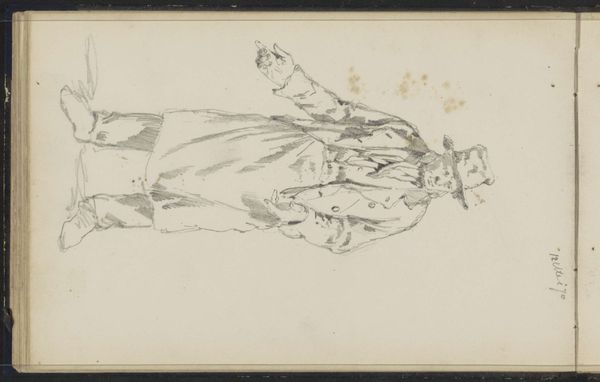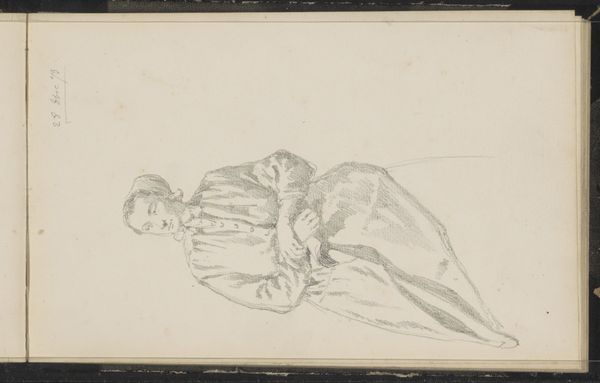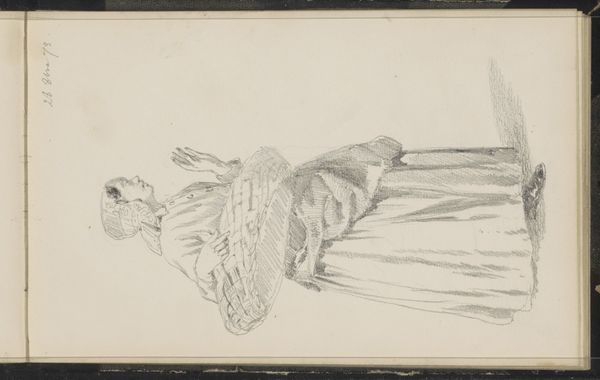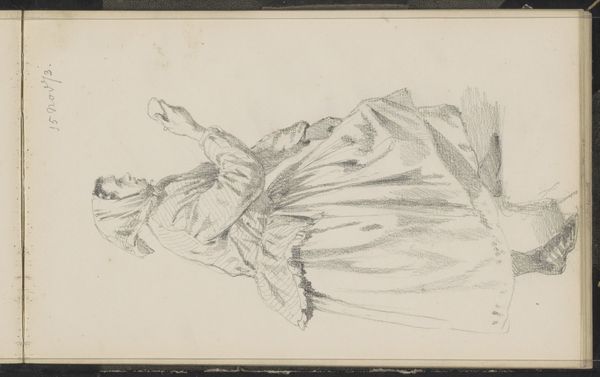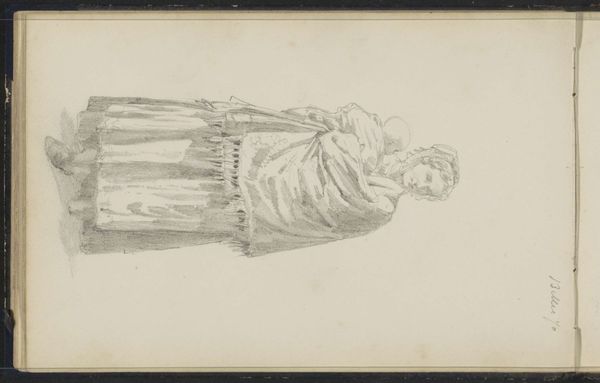
drawing, paper, pencil
#
portrait
#
drawing
#
paper
#
pencil
#
genre-painting
#
realism
Copyright: Rijks Museum: Open Domain
Editor: So, this is "Vrouw met een hoofddoek en een omslagdoek," or "Woman with a Headscarf and Shawl," possibly from 1874-1878, by Cornelis Springer. It's a pencil drawing on paper, and the swift lines give it an informal quality. It almost feels like a candid snapshot. What do you see in it? Curator: The headscarf and shawl immediately speak to me of modesty and perhaps even a certain social constraint prevalent during that era. Notice how the garments envelop the figure, almost obscuring her individual form. It’s as though the clothing itself carries a message about a woman's expected role. The use of such common clothing reminds me of genre paintings common during the realism movement; images of everyday people elevated in subject matter. Editor: That's fascinating! It's like the clothes are acting as a signifier of something beyond just warmth and covering. So, does the obscured face add to that sense of anonymity or societal expectation? Curator: Precisely! The obscured face allows viewers to project their own cultural understandings of womanhood onto the figure. Consider the recurring image of veiled women in art history - they often become vessels for cultural anxieties and aspirations, carrying weight far beyond their literal representation. Why do you think that symbolism holds so much power even today? Editor: I guess it makes sense. We still often make quick judgments based on appearance, even unconsciously. It’s striking how something so simple, a drawing of a woman in a headscarf, can hold so much cultural memory. Curator: Exactly! Springer has captured more than just a likeness; he’s offered a glimpse into a whole network of social and psychological associations connected to the simple act of wearing a head covering. Food for thought!
Comments
No comments
Be the first to comment and join the conversation on the ultimate creative platform.
